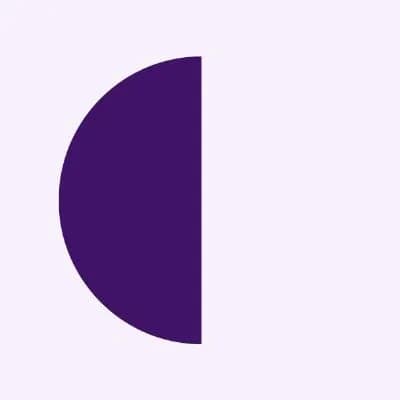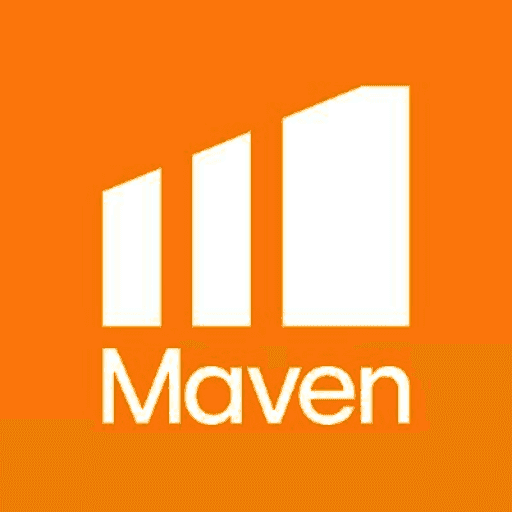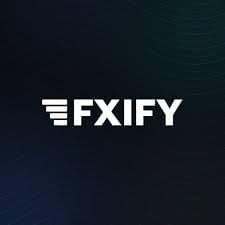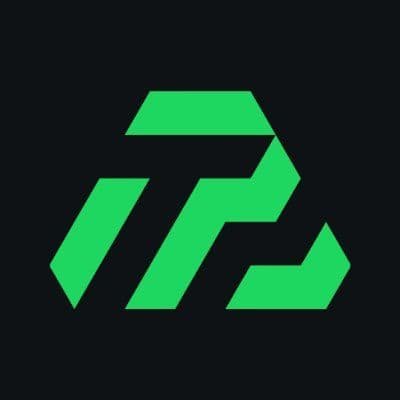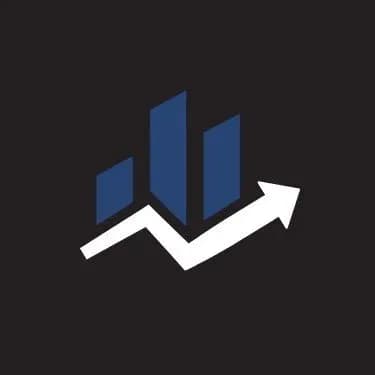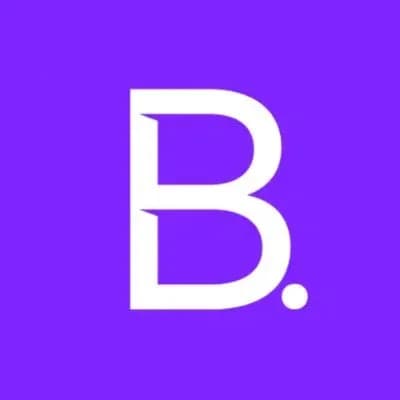Forex Trading for Starters: The Ultimate Beginner’s Guide (2025)
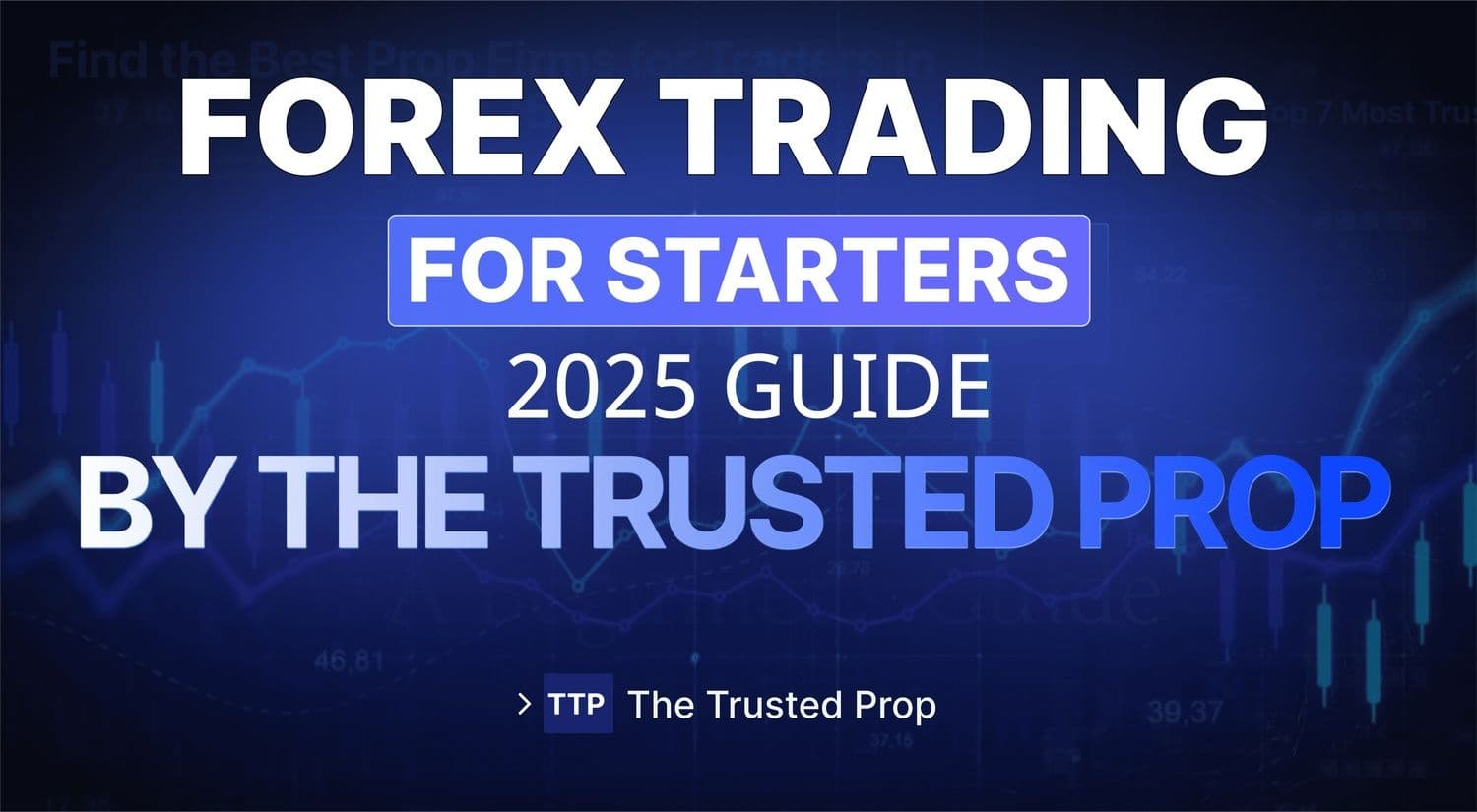
Forex Trading for Starters: The Ultimate Beginner’s Guide (2025)
6/14/2025
Introduction
Forex trading isn't an arena exclusively reserved for financial specialists anymore. With a good internet connection, anyone can access the vast world of currency trading as of the year 2025. In this guide, I’ll help you understand what forex is, the working of the forex market, the methodologies of getting into trading, and the instruments, strategies, and precautionary measures you need to achieve success.
What Is Forex Trading?
Extension of forex is foreign exchange or currency trading of one currency for another and more simply known as forex trading entails the purchasing of one currency and the selling of another. It offers traders an opportunity to profit from the fluctuations of exchange rate of one currency with another. The forex market is ranked as the number 1 in the world when it comes to financial markets, where each day more than $7 trillion is transacted.
As opposed to the stock markets, forex operates for 24 hours a day, five days a week, allowing traders from different time zones to participate at their own convenience.
With the right knowledge, anyone can trade currencies despite not having a finance degree or millions waiting as capital.
Understanding the Forex Market
The forex market is a selection of participants who buy and sell currencies internationally through the spot market, forward contracts, and futures contracts.
In the Spot Market section, virtual currencies are often traded at their current rate, and this market segment is said to account for most of the seven trillion dollars worth of trading done in one day. The spot market is the largest in terms of liquidity and currency exchange.
In Forward Market, forward contracts are an agreement to buy or sell a currency on a specific date but at the price from today.
Futures Market operates in much the same way – it involves future currency speculation, though in this market, contracts are standardized and sold on exchanges; these are referred to as forex futures.
The Rise of Forex Trading in 2025
In 2025, people from all walks of life have taken up currency trading – professionals are no longer the center of focus. This shift can be credited to advancements in technology and finance that have made forex trading a sought after investment opportunity and a way to earn passive income.
- Mobile Trading: Markets are available 24/5 on apps. traders can now stay active in the market easily through smartphones, whether they are part-timers or full-timers.
- Funded Accounts: Traders who are skilled can now easily access bulk amounts of capital due to prop firms and funded account programs without putting their savings on the line.
- Low Entry Barriers: Due to the small minimum deposit and the high leverage available, coupled with 24/5 global accessibility, forex trading has become a go to for many people wishing to have flexible trading careers in 2025.
Find out more about sponsored account options at The Trusted Prop.
Types of Forex Trading Strategies
.jpeg)
For a trader to be successful in foreign exchange markets, it is fundamental to choose the right trading strategy. Each strategy is different in terms of time, risk levels, and technical sophistication. Discussed below are the most commonly used forex trading strategy types by novice and veteran traders alike in 2025:
Explore the full breakdown on The Trusted Prop.
1. Scalping
- Timeframe: Seconds - a few minutes.
- Aim: Capturing very small price shifts (5–10 pips).
Important Factors:
- Trading with velocity.
- Quick decisions and a steady platform are prerequisites for success.
- Turnover is best during the high liquidity periods such as months in the New York session and London session overlap.
2. Day Trading
- Time frame: Within a single trading day (No overnight positions).
- Aim: Influencing short-term price fluctuations (20-100 pips).
- Key Points:
- Minimizes risks taken overnight.
- Traders execute their strategies based on short-term news, technical analysis, and momentum shifts.
- Ideal for those traders who have a few hours to spare in a day to track the market.
3. Swing Trading
- Execution Timeframe: Several days to a few weeks
- Goal: Capture medium price swings (100-400 pips).
- Key Points:
- Carried out using various technical setups, trend patterns, and at times news.
- Trades require less screen time relative to scalping or day trading.
- Ideal for part-time traders.
4. Position Trading
- Execution Timeframe: Weeks to months (can go up to even years)
- Goal: Capture longer market moving trends.
- Key Points:
- Based on long-term fundamental shifts like interest rates and economic cycles.
- Focuses primarily on weekly and monthly chart timeframes.
- Trades require a lot of patience and larger stop losses.
5. Algorithmic Trading (Automated Trading)
Execution Timeframe: Whenever your strategy allows it.
The Goal? Let your trades run automatically using pre-coded instructions no manual clicking needed.
Here’s What That Means in Simple Terms:
- You’ll be using trading bots (like Expert Advisors) or custom scripts to do the work for you.
- It’s great for removing emotions from the game no panic buys or fear-based exits.
But heads up: this isn’t plug-and-play for everyone. You’ll either need some coding skills or a trusted, pre-built system that actually works.
6. Copy Trading / Social Trading
Execution Timeframe: Precise, but depends on how fast your chosen signal provider sends the trades.
What’s the Goal?
To copy trades from experienced traders automatically so you can follow their moves without having to do all the analysis yourself.
Let’s break it down real simple.
If you’re new to trading or just don’t have time to sit and watch the charts all day, copying a pro trader can be a great shortcut. You basically follow what they’re doing without doing all the hard work yourself.
That’s why platforms like eToro, ZuluTrade, and Myfxbook AutoTrade are getting so popular. They make the whole thing super easy.
But here’s the thing don’t copy just anyone. Take a minute to check their track record. Look at how often they lose, how big those losses are (that’s called drawdown), and how risky their trades really are.
At the end of the day, it’s your money. So even if you’re copying someone, make sure it’s someone worth trusting.
Types of Forex Orders
If you’re just starting out in forex trading, one of the first things you’ll want to get comfortable with is how to place orders. Think of it this way orders are how you tell your broker what you want to do. Whether you’re trying to jump into a trade, lock in a profit, or protect yourself from a big loss, using the right type of order can make a huge difference.
Let’s keep it simple and go over the three main forex order types that every beginner should know:
1. Market Order : For When You Want In or Out Now
A market order is the quickest way to enter or exit a trade. When you place it, your trade is executed immediately at the best available price.
Example:
Let’s say EUR/USD is trading at 1.1000 and you place a buy market order your trade will go through right away at around that price.
When to Use It:
If you’re trading during a time when the market has high liquidity (like major trading sessions), market orders are great for speed. But remember price can move fast too, so expect a little slippage sometimes.
2. Limit Order : When You Want a Better Price
A limit order is used when you want to buy or sell only at a certain price or better. You’re basically saying, “I’ll wait until the price reaches the level I like.”
- Buy Limit: Place it below the current price if you think price will drop to your level before going up.
- Sell Limit: Place it above the current price if you believe price will rise and then fall back down to your target.
Why It’s Helpful:
Limit orders give you more control. You can get in at better prices but keep in mind, they’re not guaranteed to be filled. If the market never reaches your set price, your order just won’t execute.
3. Stop Order – Triggered Only When a Price Level is Hit
A stop order activates only once the market hits a specific price. At that point, it becomes a market order and gets filled at the best available price.
- Buy Stop: Set it above the current market price good when you think price will keep climbing after it hits a certain level.
- Sell Stop: Set it below the current price useful if you think price will drop further after breaking a key support level.
Why It’s Useful:
Stop orders are super handy when you're trading breakouts or want to limit risk. Just be careful if used poorly, they can lead to quick losses, especially in fast-moving markets.
Choosing the Best Trading Platform for Forex Traders
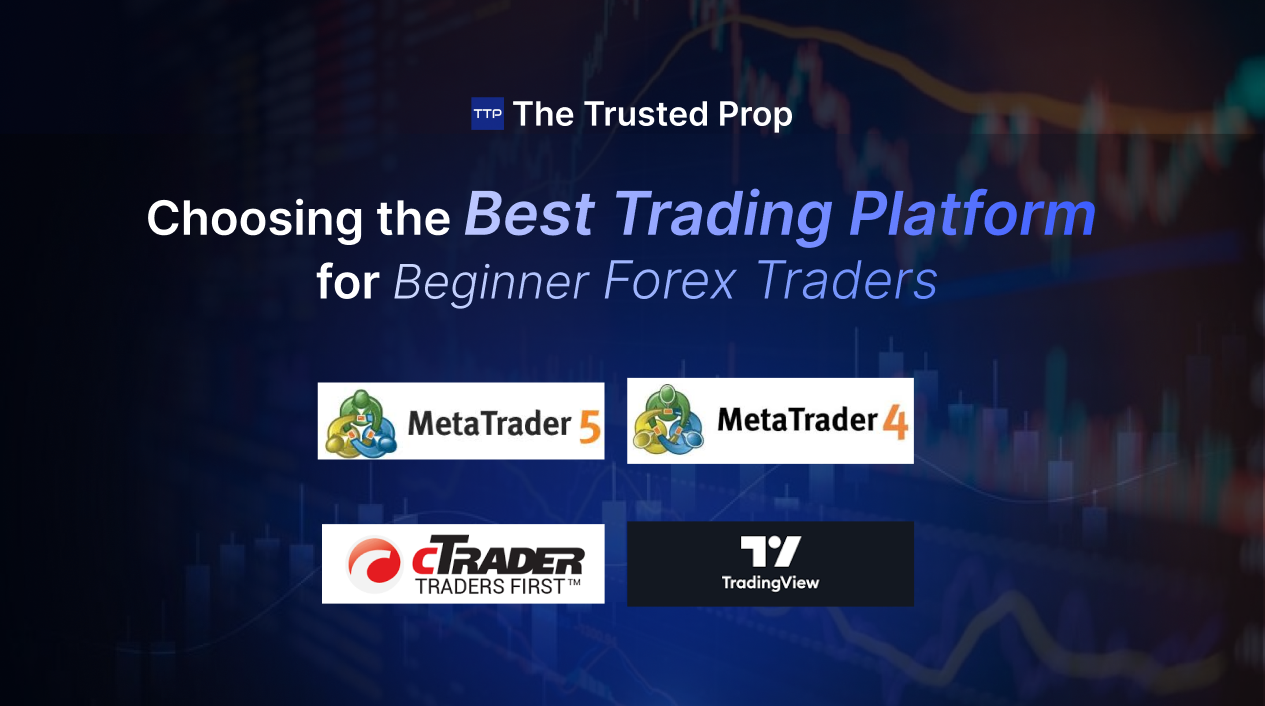
Choosing the right trading platform is one of the most important decisions you all make as a trader especially if you are just starting out. Think of it as your trading headquarters it is where you look at charts, place trades, check your performance, and manage your risks.
And here is the truth: if the platform feels clunky or confusing, you all likely make mistakes not because you are a bad trader, but because the tools are working against you.
So, what should a good platform offer? It should be simple to use, fast in execution, secure, and built to match your trading style.
Let’s take a look at some of the most trusted forex trading platforms for 2025, and who they are best suited for:
MetaTrader 4 (MT4) – Best for Beginners and EA Users
Why people love it:
MT4 is basically the OG of forex platforms. It’s been around forever and has built a loyal following for good reason. It is light, easy to learn, and gets the job done.
What makes it stand out:
- Tons of built-in and downloadable indicators
- You can automate trades using EAs (Expert Advisors)
- Massive online community with free tools, tips, and guides
MetaTrader 4 is Best for:
Complete beginners, manual traders, and anyone using trade signals or automation.
MetaTrader 5 (MT5) – A Step Up with More Features
What’s new in MT5:
It’s everything MT4 has but better. More tools, more markets, and deeper data.
Extra features include:
- More chart timeframes (like 2-minute or 12-hour charts)
- Built-in economic calendar to track global events
- Support for stocks, crypto, and commodities too
MetaTrader 5 is Best for:
Traders who have got the basics down and want more detailed analysis and access to other asset classes.
cTrader – Built for Speed and Serious Execution
Why pro traders go for it:
cTrader is all about precision and speed. It is loaded with features for traders who care about every second and every pip.
Cool stuff it offers:
- Level II pricing (great for seeing market depth)
- Pro-style execution with minimal slippage
- Highly customizable and professional-looking charts
cTrader is Best for:
Scalpers, day traders, and those who trade fast and often.
TradingView – Great for Visual Learners and Strategy Builders
What makes it different:
TradingView runs in your browser no installs, no downloads. It is sleek, simple, and full of community-shared trading ideas.
Why traders swear by it:
- It is perfect for backtesting strategies visually
- Pine Script lets you build your own indicators
- You can follow or copy other traders’ ideas and charts
TradingView is Best for:
Chart lovers, strategy testers, and anyone who wants to learn by seeing how others trade.
Summary of Comparison Across Platforms
With so many platforms competing for day traders in 2025, each brings something different to the table. From lightning-fast execution to low fees and customizable charts, here's how the top contenders stack up.
| Platform | Best For | Automation | Charting Tools | Assets Beyond Forex |
|---|---|---|---|---|
| MT4 | Beginners, EAs | ✅ | Basic | ❌ |
| MT5 | Advanced Traders | ✅ | Advanced | ✅ |
| cTrader | Scalpers, Pros | ✅ | Very Advanced | ✅ |
| TradingView | Analysts, Educators | ❌ (manual) | Excellent | ✅ |
How To Start Forex Trading In 2025
Step 1: Choose a Broker You Can Actually Trust
Before you place your first trade, you need a solid broker because they’re your direct link to the forex market. And honestly, your success can depend a lot on who you pick.
A good broker doesn’t just offer a platform they offer peace of mind, fair conditions, and fast support when things go wrong.
Here’s what to look for:
Regulation: Make sure the broker is licensed by top regulators like the FCA (UK), CySEC (Cyprus), or ASIC (Australia). If they’re not regulated, that’s a big red flag.
Low Spreads & Fair Fees: Lower spreads mean lower trading costs. If the broker is charging too much in fees or hidden commissions, your profits will shrink fast.
Platform Options: The best brokers give you choices like MT4, MT5, or cTrader so you can trade on the platform that suits your style.
Leverage Options: Leverage can boost your profits, but it also increases risk. Choose a broker that gives you flexible control over your leverage not one that traps you in risky settings.
Customer Support: Things can and do go wrong. You want a broker that responds quickly and helps solve issues not one that disappears when you need them most.
Step 2: Set Up Your Trading Platform
Now that you’ve picked a broker, it’s time to set up your trading platform This is the actual software you’ll use to place trades, check charts, and manage your account.
If you're new to forex, don’t stress. You don’t need to know everything on day one. What matters is choosing a platform that feels simple and makes sense to you.
Here are the most commonly used platforms:
- MetaTrader 4 (MT4): Great for beginners, light and easy to learn.
- MetaTrader 5 (MT5): A step up with more features and asset options.
- cTrader: More advanced ideal for fast trading and precision.
- TradingView: Perfect for visual learners and strategy testing.
Start with a demo account. Seriously, don’t skip this part.
Spend time exploring the platform. Practice placing trades. Try out the different tools and indicators. You can even test a few trading strategies without using real money.
This is your chance to learn the ropes without any risk take full advantage of it.
Step 3: Build Your Trading Plan
Before you risk a single dollar in the forex market, you need a plan. A real, written-out, simple-to-follow trading plan.
Why? Because trading without a plan is like driving without a map you might move, but you’ll probably end up lost (or worse, broke). A solid plan helps take the emotion out of your decisions and gives you a clear set of rules to follow.
Here’s what your beginner-friendly forex trading plan should include:
Risk Management
Decide how much you're okay with losing before the trade even starts. A good rule of thumb is to risk no more than 1-2% of your account per trade. That way, one bad trade won’t wipe you out.
Trading Strategy
Are you planning to follow trends? Trade breakouts? Maybe you're more of a range trader? Pick one strategy to start with and learn it well don’t try to mix everything in the beginning.
Trading Hours
Set your trading hours around major market sessions like the London open or New York session. That’s when you’ll find the most movement and better trade setups.
Entry & Exit Rules
Know when you’re getting in and why. And more importantly when you’re getting out. Be clear about what makes a trade “good” for you, and have a plan for both profits and losses.
Common Mistakes to Avoid in Forex Trading
Even if you’ve got the right tools, a solid plan, and a good strategy, you can still lose money in forex. That’s the reality. But here’s the good news most beginner mistakes are avoidable if you know what to watch out for.
Let’s start with one of the biggest ones:
Over-Leveraging
Leverage is what makes forex exciting and dangerous.
It lets you control a large trade with a small amount of money. So, with something like 1:100 or even 1:500 leverage, a $100 deposit can suddenly control thousands.
Sounds great, right? But here’s the catch it cuts both ways.
Yes, you can make bigger profits. But if the trade goes against you? You can lose your money just as fast sometimes within minutes.
The Mistake:
Using high leverage and risking too much on one trade. It feels like you’re speeding down the highway with no seatbelt on.
The Fix:
Go easy on the leverage. Start small. Trade with lot sizes that feel manageable. Sure, your profits might be smaller at first but so will your losses. And that keeps you in the game longer.
Overtrading – Trading Just to Trade
Overtrading is when you keep entering trades just to feel busy even if the setup isn’t solid. Some call it "participation trading" taking trades just to be part of the action.
What usually causes it?
- Boredom
- FOMO (fear of missing out)
- That urge to “win it back” after a loss
The Fix:
Stick to your plan. Only take trades that match your strategy. One great setup is worth way more than five random ones. Quality always beats quantity in this game.
Lack of Understanding – Jumping in Too Fast
Trading without learning is like getting in the pilot seat of a plane without knowing how to fly. You might get off the ground… but it’s not going to end well.
The Mistake:
Placing real trades without first learning about how the market works things like chart reading, risk control, or basic strategies.
The Fix:
Take time to learn. Use free resources like BabyPips, watch YouTube tutorials, and read blogs or beginner books. Most importantly, practice on a demo account before risking your hard-earned money. Build the foundation first it pays off big later.
Forgetting to Document Trades – No Journal, No Growth
One of the easiest ways to level up as a trader is to keep a journal but most beginners skip it. That’s a big mistake.
The Problem:
You don’t track what worked, what failed, or why you took the trade. Without that info, you keep repeating the same mistakes.
The Solution:
Start a simple trading journal. You don’t need anything fancy even a notebook or spreadsheet works. Note things like:
- Why you took the trade
- Where you entered and exited
- What you were feeling during the trade
- Whether it was a win or loss and what you learned
This habit alone can turn you from a shaky beginner into a much more confident, consistent trader.
How Forex Traders Can Make Money Beyond Just Trading
Believe it or not, trading isn’t the only way to earn from your forex skills. If you’ve spent time learning the market, building strategies, or even just explaining concepts well there are plenty of other ways to turn that into income.
Here are some smart and beginner-friendly ideas:
1. Start Copy Trading or Signal Services
If you’ve built a solid track record, why not let others follow your trades?
- Platforms like eToro and ZuluTrade let you share your trades publicly. When people copy you, you earn either through commission or subscription fees.
- You can also run your own signal service on platforms like Telegram, WhatsApp, or Discord. Just post your trade ideas and grow a loyal community of traders who trust your calls.
2. Teach Forex Through Online Courses or YouTube
If you’re good at explaining stuff, this one’s a no-brainer.
- You can create beginner-friendly courses, tutorials, or even one-on-one mentorship sessions. Platforms like Udemy and SkillShare let you sell these courses easily. Or you can build your own website and offer paid access.
- Want something simpler? Start a YouTube channel. Share tips, live market breakdowns, or even simple "how-to" clips. Over time, this can build an audience and even bring in ad revenue.
3. Join Affiliate Programs for Brokers or Prop Firms
Many forex brokers and prop firms offer affiliate programs. All you do is refer other traders and when they sign up and start trading, you earn a commission.
Some companies pay for every new client you bring in. Others pay based on how much those clients trade. Either way, it can be a decent passive income stream.
You can promote affiliate links through:
- A blog or website
- Instagram, Twitter, or TikTok
- A YouTube channel
- Telegram or Discord groups
Just be sure to promote only reliable and regulated companies your reputation matters.
Best Resources to Learn Forex in 2025
1. Classic: The School of Pipsology
- Ideal: Everyone with no experience
- Cost: None
- Link: www.babypips.com
In 2025, BabyPips is still the go-to source for those who want to learn forex trading. Their School of Pipsology literally walks you through every stage of trading from preschool (the basic) to Ph.D. (mastering strategies). They use appropriate words and explanations alongside fun quizzes and comic-like visuals to explain difficult concepts.
Why it’s great:
- Comprehensive and clear materials
- Robust and clear interactive community forums
- Pioneering comics alongside textbooks
- Fore and foremost, comics alongside textbooks
2. TradingView – Visual Learning & Strategy Testing
Best for visitors during their trading education online
Traders who learn by sight
- Cost: Pro edition optional
- Link: www.tradingview.com
Unlike other trade view, TradingView is not just a charting platform, it serves as a social network for all traders. With Switching pines, like scripts to most record pointers, you can view the ideas of professional analysts, backtest ps, different strategy configurations, and even…
Main features listed your profile:
- Access to market indicators, tools, and live markets.
- Thousands of traders ideas for trading opportunities.
- Community self-published content (tutorials, analysis).
3. YouTube Channels – Invitation to Learn From Real Traders.
YouTube is teeming with interesting forex content. Here are some most trusted channels for 2025:
- Steven Hart’s The Trading Channel - Forex Strategies, Psychologies for both novices and professionals.
- Akil Stokes - Practical strategies and risk management, becoming a trader.
- Rayner Teo - Uncomplicated explanations of trend-following and price action.
- FTMO Academy - Traders challenge from prop firms is the focus here.
- Transparent FX - Comprehensive breakdown of the concord's past and real-time chart placement.
If you prefer to learn visually and aurally, this is a great free option for you.
Must-Read Books on Forex and Trading Psychology:
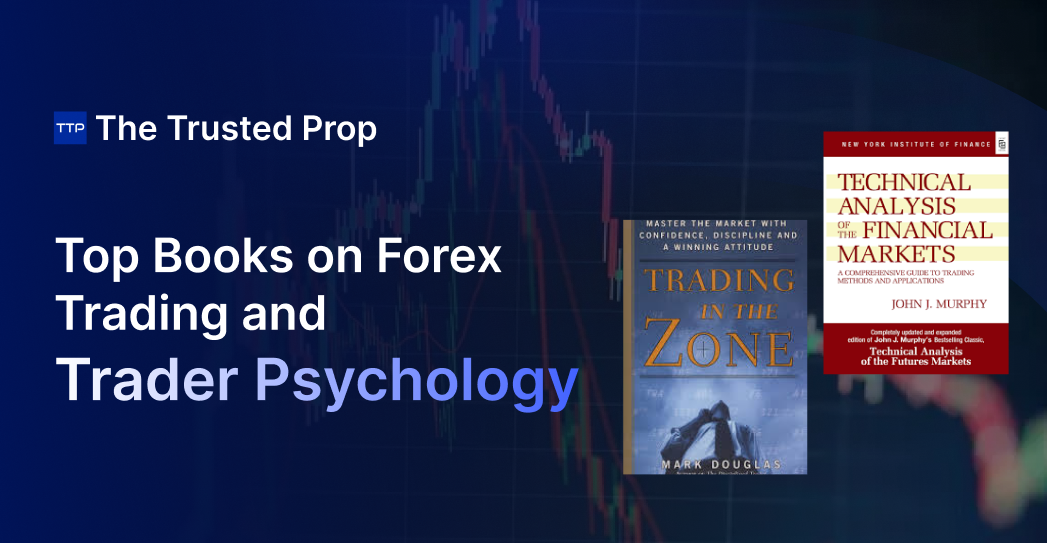
Reading books still cultivates one of the deepest understanding. Here are benchmarks forex and trading books.
- “Trading in the Zone” by Mark Douglas.
Master the mental side of trading – Fear, Greed, and the will to act or not to .Read more about the book here. - "Technical Analysis of the Financial Markets" by John Murphy.
A must have for every trader. Ultimate reusable guide filled with chart patterns and stock market indicators.
Forex Trading Recommended Books List for Traders
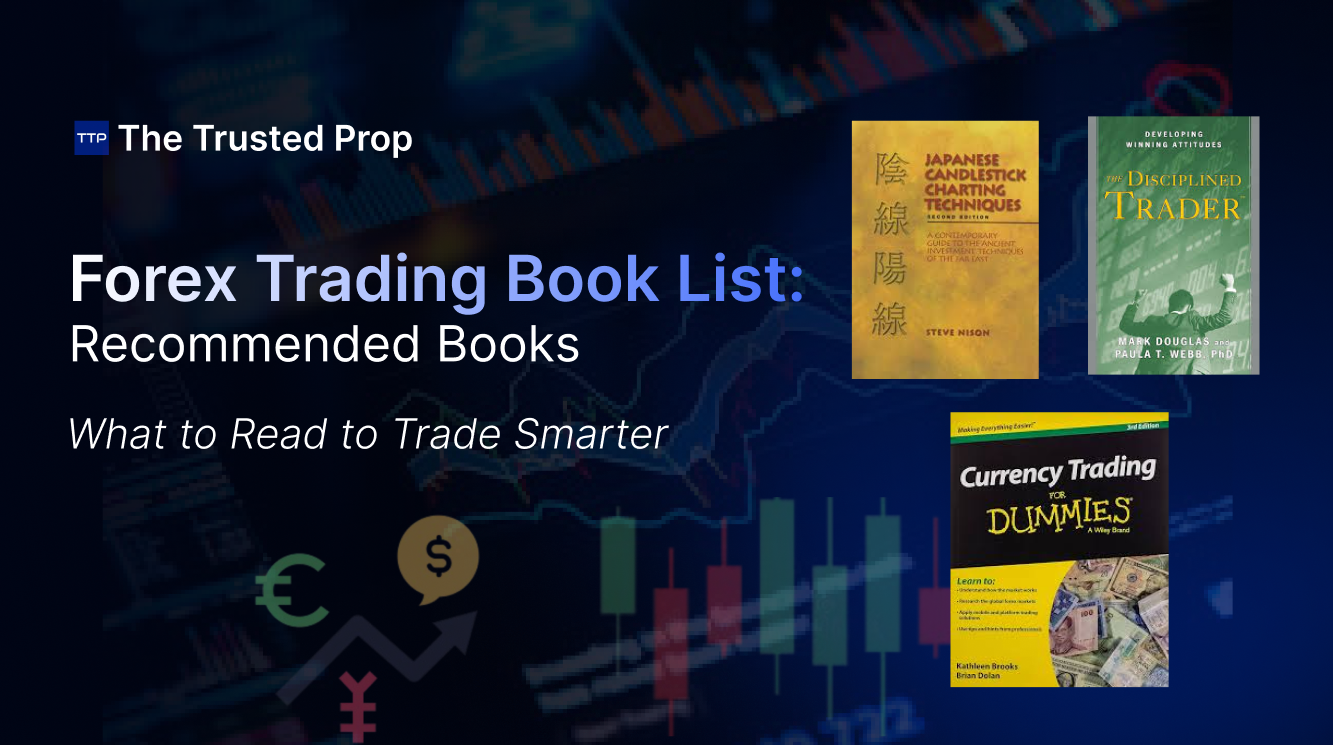
Books suggested for gaining knowledge about foreign exchange trading
"Japanese Candlestick Charting Techniques" by Steve Nison Level up your skills with carving candle patterns which is pivotal for all traders who use price actions. Check out the book here.
"The Disciplined Trader" by Mark Douglas Develop self-control as well as constancy in your sound trading plan. Explore the book here.
- "Currency Trading for Dummies" written by Brian Dolan A must read forex summary book for international currency trading dummies.. Learn more about the book here.
Forex Trading Final Thoughts
Is it ideal to jump into forex trading? Yes, but only if you're focused on learning. Forex trading has the potential to change your life. Keep in mind it is not a get rich scheme. It demands undivided focus, discipline, and unyielding patience.
It is common to hear beginner traders stating that they want to achieve good profits in no time, but the reality check is there is a lot that goes into achiving success when trading forex such as knowing how to manage risks and being able to balance your emotions.
The most effective and successful traders do not approach forex trading as gambling - they adopt a more business oriented mindset. If you're someone who is prepared to put their time into studying, practicing, and self-improvement, then forex can assist you in obtaining financial stability for the long run.
visit The Trusted Prop a hub for forex education, reviews, and discount offers tailored for aspiring funded traders.
You may also like
FundedElite Challenge Accounts: Our Honest 2025 Review
.jpeg&w=1920&q=75)
How to Get Started with FTMO: Full Guide for Indian Traders in 2025
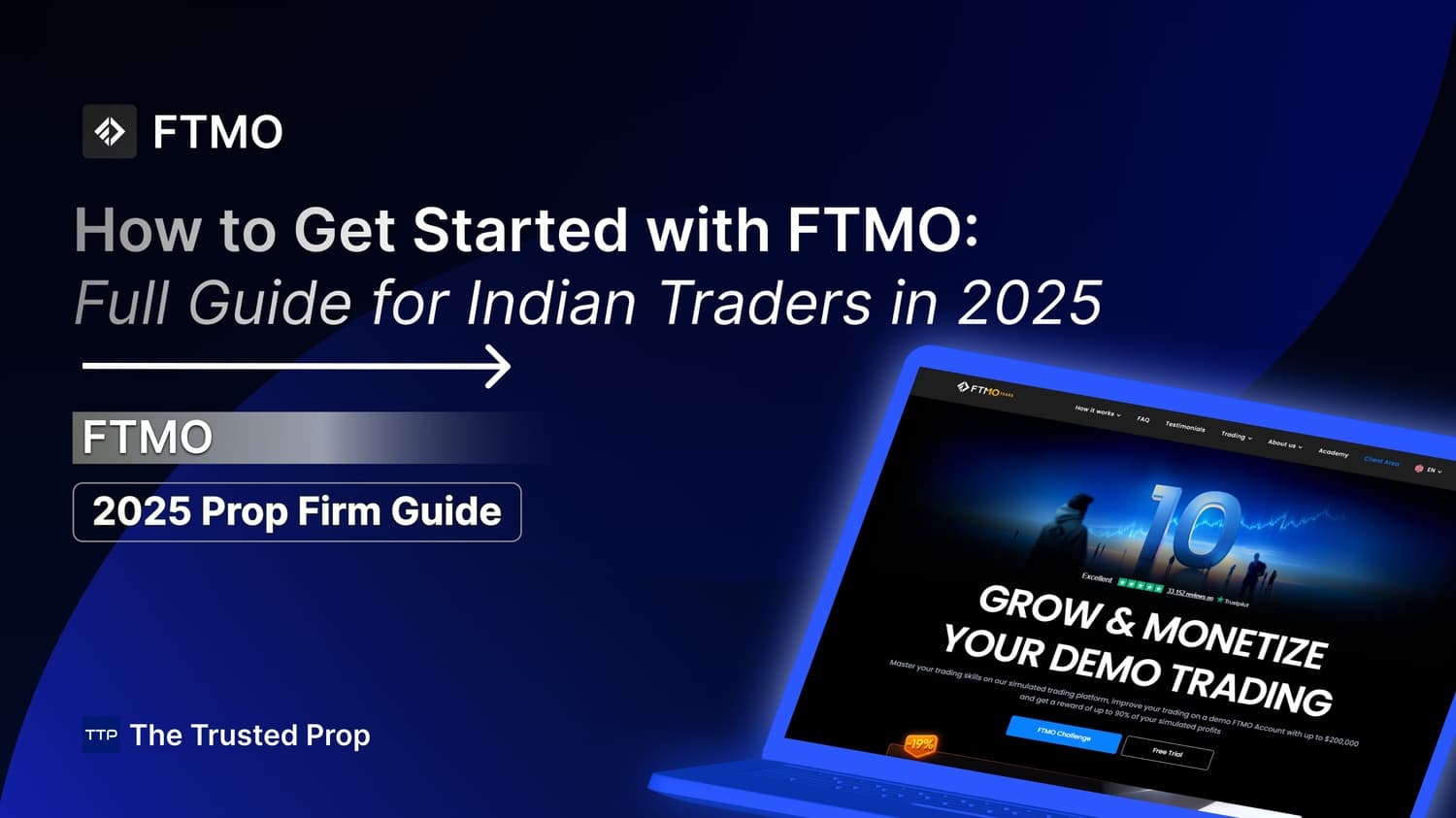
My Forex Funds Relaunch 2026: Is It Coming Back Officially?
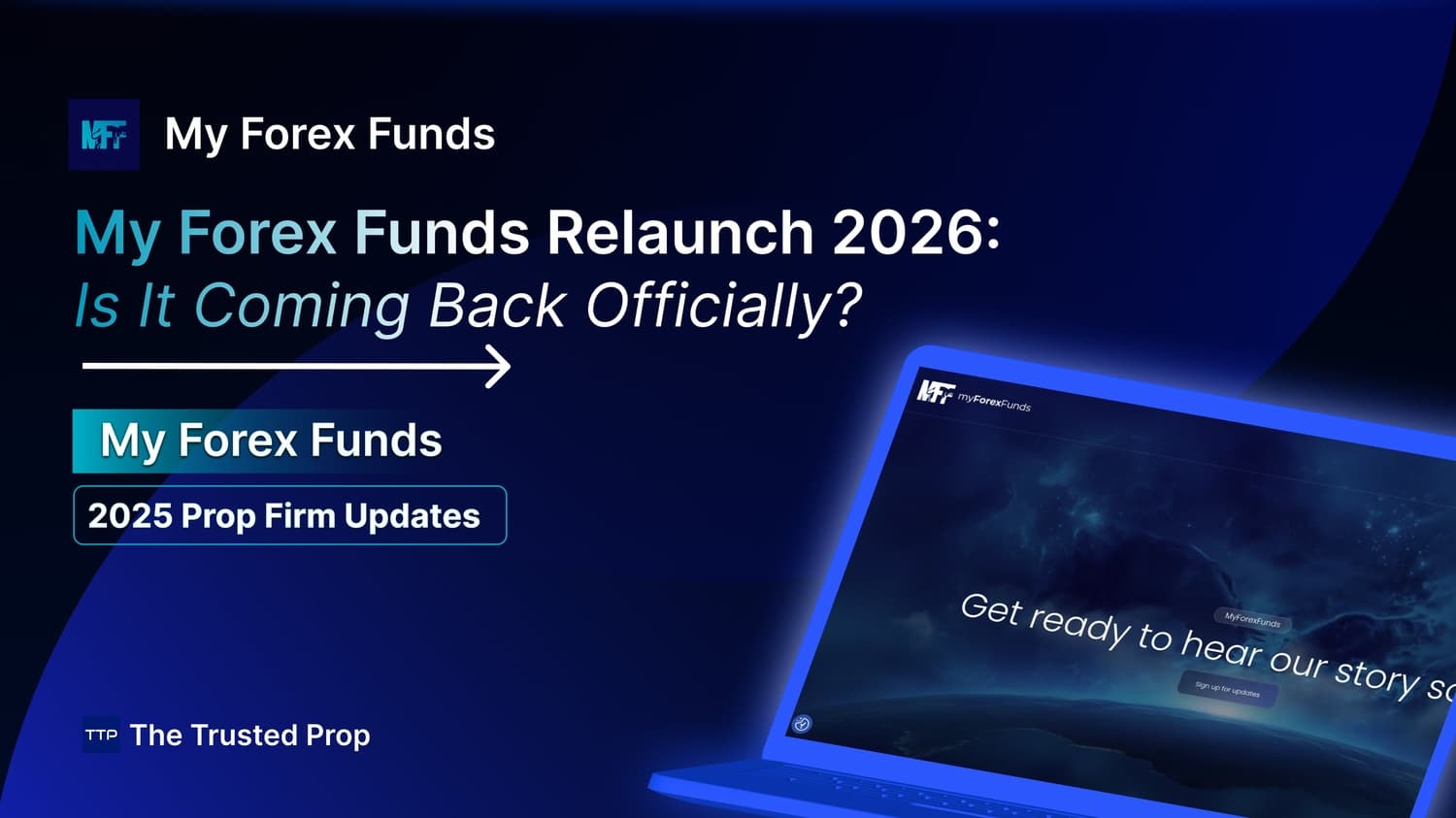
iFunds Prop Firm Payout Rules, Profit Split & Scaling 2025
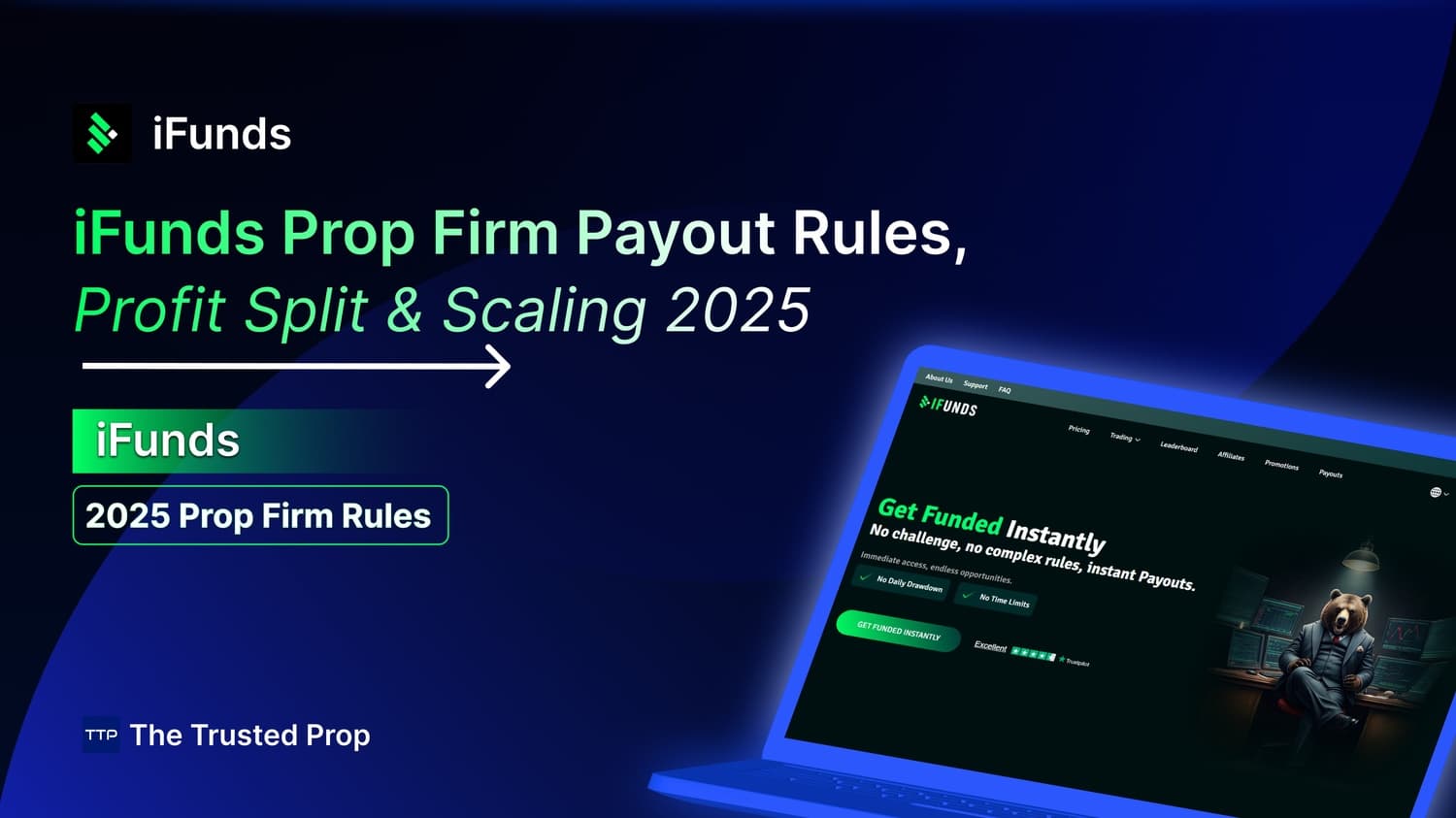
How to Pass the FTMO Challenge FAST: Full Guide for Indian Traders

FORFX Payouts, Profit Split & Withdrawal Rules (2025 Guide)
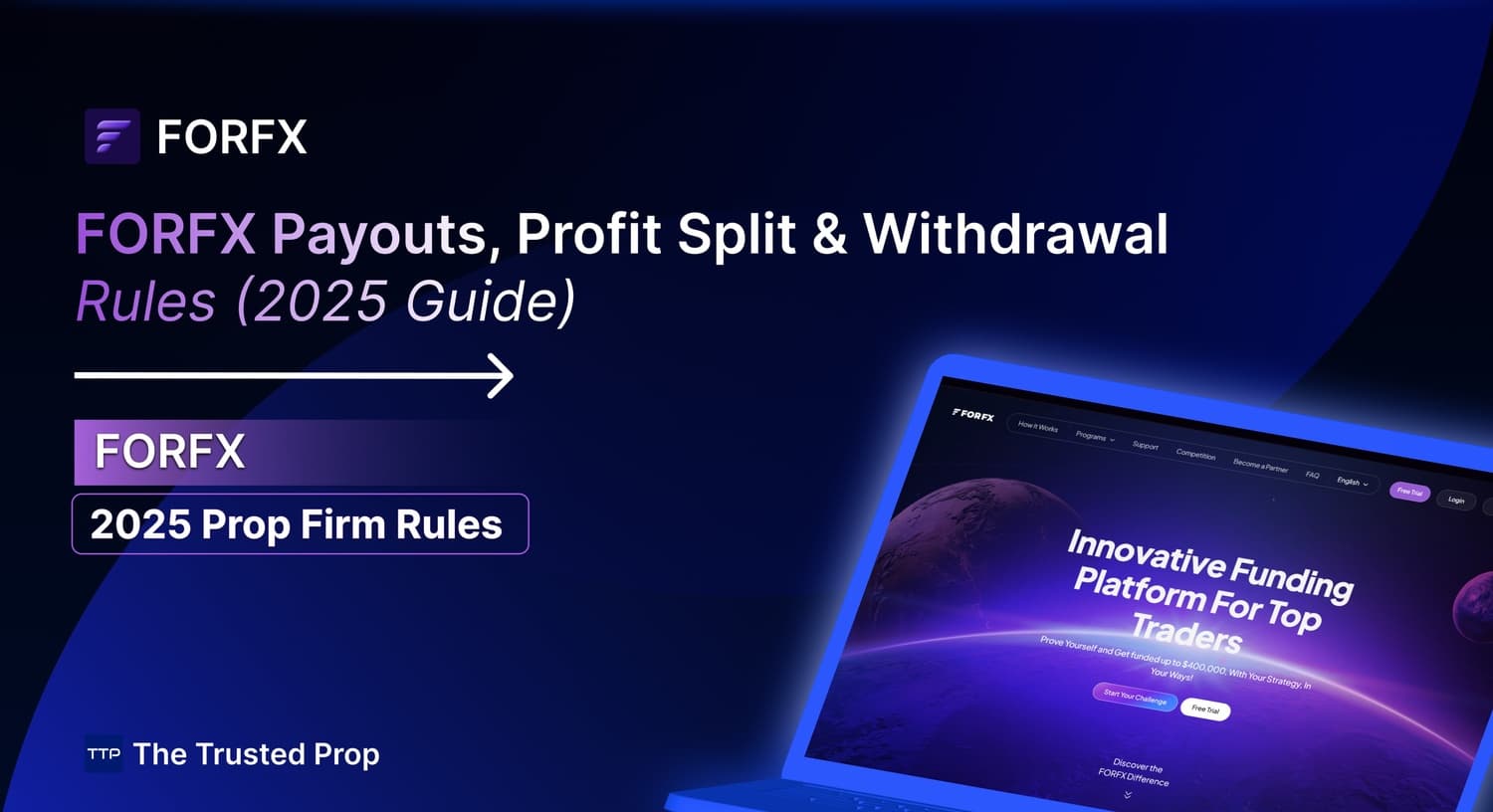
Top Prop Firm Trading Competitions of 2026: Win Free Accounts

No FAQs are available for this topic yet.

.jpeg&w=3840&q=75)



